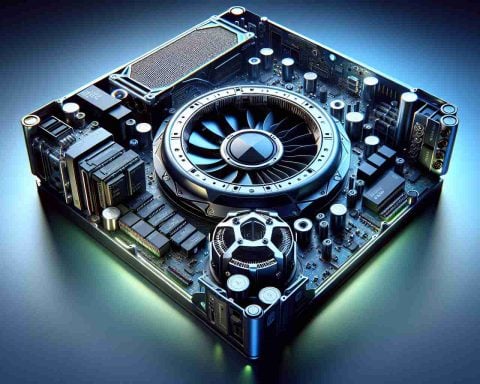A New Era in Electric Vehicle Innovation
At CES 2025, Donut Lab introduced groundbreaking technology that promises to reshape electric vehicle (EV) designs and their capabilities. Their innovative second-generation in-wheel motors, characterized by a unique “donut shape,” aim to significantly cut down vehicle weight while ensuring high power and efficiency, potentially ushering in a new phase for the EV market.
Traditionally, EVs have borrowed designs from gas-powered vehicles, placing motors within the car’s structure and connecting them to the wheels through a complex drivetrain. Donut Lab reimagines this concept by embedding motors right inside the wheel arches. This smart design allows for more room inside the vehicle, accommodating additional cargo, passengers, or battery power. Each 21-inch motor unit boasts impressive specifications, generating as much as 630 kilowatts (or 845 horsepower) and 4,300 newton-meters (3,171 pound-feet) of torque—all while weighing a mere 88 pounds (40 kilograms). The significant reduction in system weight may translate to enhanced performance and efficiency in EVs.
However, the increased unsprung weight in the wheels raises concerns regarding vehicle handling and ride comfort. Nonetheless, Donut Lab remains hopeful that the benefits, such as superior torque and simplified production processes, will ultimately outweigh any drawbacks.
This innovative motor technology isn’t limited to cars; it has adaptations for semi-trucks and electric scooters, indicating a broad market appeal. As Donut Lab’s designs push the boundaries of EV aesthetics and functionality, the future of electric transportation looks bright.
Revolutionizing Electric Vehicles: Donut Lab’s Game-Changing In-Wheel Motors
At CES 2025, Donut Lab unveiled a transformative technology that could redefine electric vehicle (EV) designs and capabilities. Their second-generation in-wheel motors, known for their distinctive “donut shape,” promise significant advancements in reducing vehicle weight while enhancing power and efficiency. This development marks a critical step forward for the EV market and could lead to a new standard in electric transportation.
Features of Donut Lab’s In-Wheel Motors
1. Compact Design:
The innovative placement of the motors inside the wheel arches eliminates the need for traditional, bulky drivetrains. This design not only saves space but also permits additional room for cargo, passengers, or battery packs.
2. Impressive Specifications:
Each 21-inch motor unit is capable of generating up to 630 kilowatts (845 horsepower) and 4,300 newton-meters (3,171 pound-feet) of torque, while maintaining a lightweight design of only 88 pounds (40 kilograms).
3. Ease of Production:
The simplification of production processes is a major bonus. By integrating the motors directly into the wheels, manufacturers can streamline assembly and reduce costs, potentially passing savings on to consumers.
Use Cases
Donut Lab’s in-wheel motors are not confined to passenger cars. They have also developed versions suitable for semi-trucks and electric scooters, indicating a versatile application across various segments of the EV market.
Pros and Cons
# Pros:
– Enhanced Power and Efficiency: The high torque and reduced weight can lead to improved acceleration and energy efficiency.
– Space Optimization: More cargo and passenger space can enhance comfort and utility in vehicle designs.
– Production Cost Reduction: Simplified design may lead to lower manufacturing costs.
# Cons:
– Unsprung Weight Concerns: Increased unsprung weight may affect vehicle handling and ride comfort, which needs further analysis and testing.
– Market Adaptation: The success of this technology will depend on market acceptance and integration into existing vehicle architectures.
Market Trends and Predictions
As electric vehicles continue to dominate the automotive landscape, innovations like those introduced by Donut Lab are set to shape the future. The market is increasingly favoring companies that offer sustainable and efficient solutions, making in-wheel motors a timely and relevant innovation.
Innovations in Electric Vehicles
Donut Lab’s approach challenges traditional automotive designs and presents a novel synergy between design and function. This could lead to new electric vehicle models that are more efficient and appealing to consumers. Further research on ride quality and handling is essential to address potential drawbacks, ensuring these advancements do not compromise user experience.
Conclusion
Donut Lab’s in-wheel motor technology exemplifies the potential for innovation in the electric vehicle sector. With growing interest in sustainability and performance, the success of this technology could signal a major shift in how electric vehicles are designed and manufactured in the years to come.
For more insights on the future of electric vehicles, visit Electric Vehicle.













